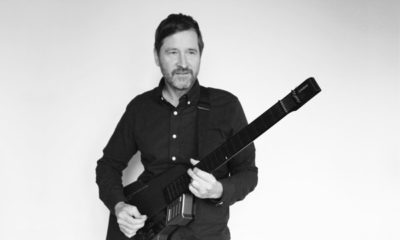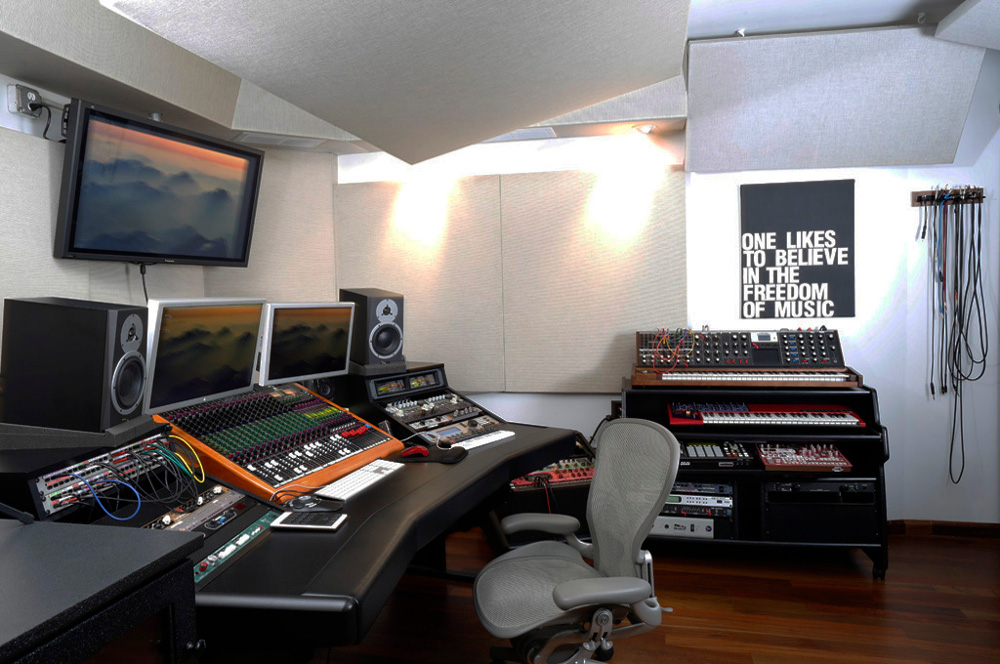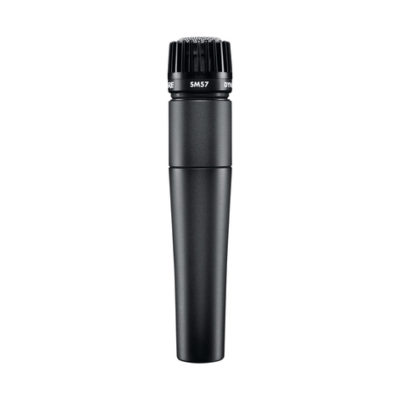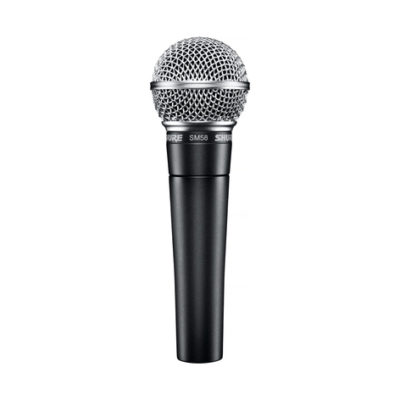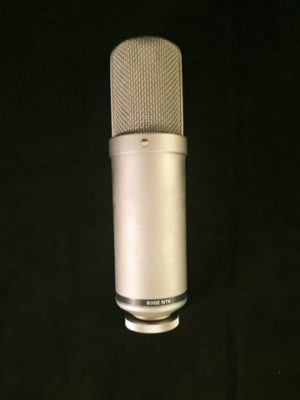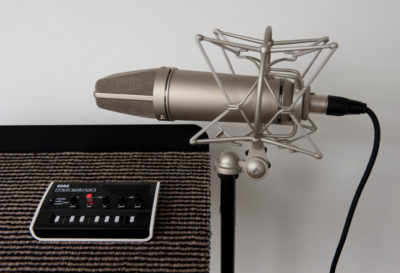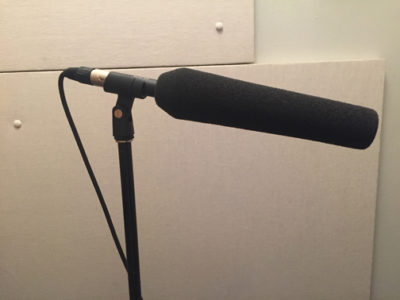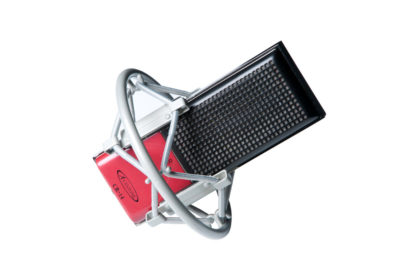Tiny Lockers: 10 Microphones or Less — Explosion Robinson, NYC
Choices, choices, choices. Book time to track at most any pro recording studio, and they’ll proudly show you a mic locker with dozens of omnis, ribbons, LDC’s and 123’s.
But what happens when there aren’t a million choices for capturing sound? As any experienced engineer knows, the limitations are often where things get interesting.
In this new series, “Tiny Lockers: 10 Microphones or Less,” SonicScoop is visiting with producers, composers and personal studios that have fewer than 10 mics in their collections. For those who spend most of their time ITB but still have to get outside on a regular basis, streamline workflows, minimize storage, and/or maximize their gear investment dollars, curating a small-but-mighty mic group is an absolute necessity.
“Tiny Lockers” debuts with composer/artist/remixer Stephen Hermann, founder of the busy music house Explosion Robinson on Manhattan’s West Side. From Foley to Fenders, Hermann’s creations often require him to mike up live sound sources. Which eight capture devices made the cut in his highly selective collection? This carefully culled cadre includes both classics and surprises.
Composer Name: Stephen Hermann
Websites: Company: http://www.explosionrobinson.com
Label: http://www.exro.fm
Band: http://www.anthemfacility.com
Producer/Remixer: http://www.drversion.net
Location: Manhattan, New York City
Soundtracks Served: Music and sound design for picture, writing, producing and remixing.
Clients/Credits: Hasbro, VH1, Dell, Samsung, Logo, Hulu, Intel, Nickelodeon
For Example… https://vimeo.com/183566116
Real Recording: For Foley it’s usually better to record original material rather than try to tailor sound library sound effects. If I think I can create the sound I’m looking for and record it quickly, I will do that before I even do a search in our sound effects library. For music I prefer to mic amps for guitar, bass. keyboards, or synths. The dilemma is the flexibility and array of options you have in the box, and the speed which you can access them, compared to setting up and mic’ing the real thing.
We have a Fender Rhodes here in the studio. Does it sound better and more authentic mic’d up with the Fender Twin Reverb, rather than Rhodes virtual instrument? Definitely. But in the box you have the option to choose from the Mark I, Mark II, suitcase, and any other electric keyboard you can think of. Plus you can use amp emulation software to choose from an incredible amount of amps and mic emulations.
To meet client demands, quick deadlines, and recall-ability it makes more sense to stick to “in the box” in my workflow. But to get a better more authentic recording I prefer to mic real life sources. With music this is usually reserved to producing my own projects and not client-lead ones. Mostly this would be the music I write and produce on our in-house label exro.fm.
Mic Check: It has been years since I have bought any new mics, because a majority of our work that keeps the rent paid and lights on needs to stay in the box. So the mic collection we have is more than enough.
If I’m working on recording a few musicians at once, a full band. or something very specific, like harp, vibraphone, or an opera singer, I’ll book a studio where they are set up for that, and have the mics to record it properly. I really like the Seaside Lounge in Brooklyn. The live rooms sound great, they have a nice selection of mics, and you can’t beat their rates.
Recently, I had the amazing opportunity to record at Abdalla Studios in Havana, Cuba. The lineup was bass, guitar. congas, timbales, and vibraphone. There were 4 mics on the congas alone. The quality of the recording and performance and musicianship was top notch. The songs we recorded are Cuban versions of a new project I am working on with an artist by the name of Marcus Harmon. The originals will be released first than we will put out the Cuban versions as covers.
In No Particular Order
Great for mic’ing amps. Affordable standard mic, that is not bad for vocals either.
Bought this mic back in college used at a pawn shop. I think I recognized it because most live venues use them and thought how could I go wrong with it. I needed something to plug in to my Tascam cassette 4-track to record vocals and acoustic guitar.
Second mic I ever bought. These are made in Russia and rumors have it that one mic can be very different than the next. Mine sounds a little bright and brittle, so I rarely use it.
This is a tube mic and sounds great with vocals and acoustic guitar. Great for amps too. It has a warm and rich sound. So when I don’t want the clearer sound of the U 87, this is what I use. A friend of mine recommended it. Excellent mic for the price.
Guitar recorded with the Rode NTK:
This mic is always set up in our booth. I use it on almost all the vocals I record. There is a reason it is an industry standard.
Vocals recorded with the U 87:
I use this shotgun mic on VO recording, ADR, and foley. I used to use the U87 for VO, but I found it had unnecessary brightness for broadcast mixes, and sometimes brings out sibilance in certain voices. The 416 sounds great for speaking and narration and keeps a lot of the weight to the voice, so it sits nicely in a mix. Plus, it is an industry standard for location sound. So if you are trying to match some location sound, this is the mic that will usually get you the closest.
Ribbon mic I use to record horns. It rolls off the hi end a bit and has a smooth but darker sound. I borrowed a friends and then ended buying one of my own.
Trumpet recorded with he Avatone Pro CR-14:
Kick drum mic for the rare occasion we record drums here. I prefer to work out of a bigger studio that is better equipped to record drums. We are set up more for mixing and post production here at Explosion Robinson. But our Studio A booth is super insulated and very dead. You can get an interesting tight drum sound in it.
A great mic is nothing without a great preamp. I use these two:
Neve 5032 and Great River Me-INV
But I guess that’s another article!
— Stephen Hermann, Explosion Robinson
Please note: When you buy products through links on this page, we may earn an affiliate commission.







